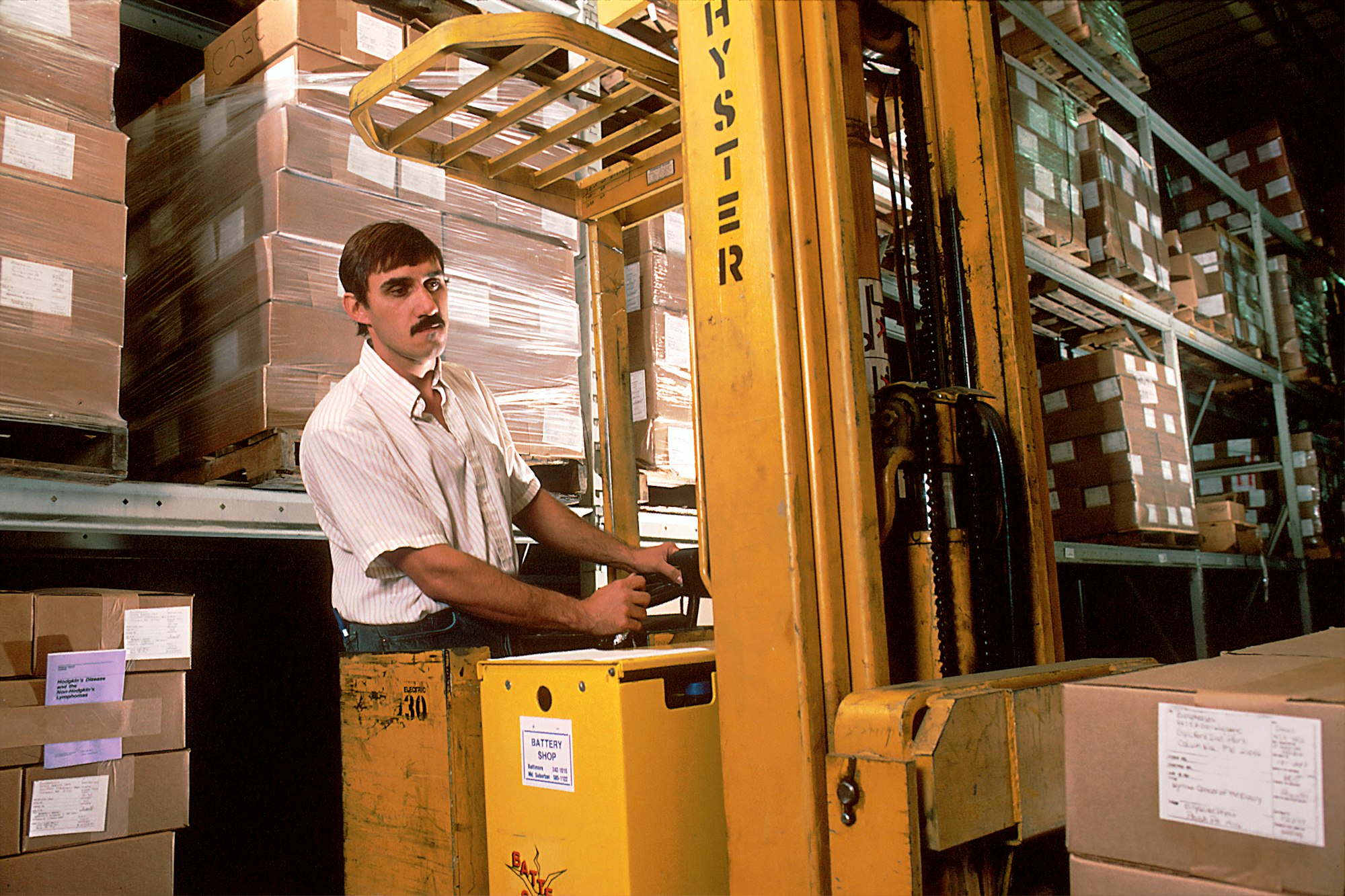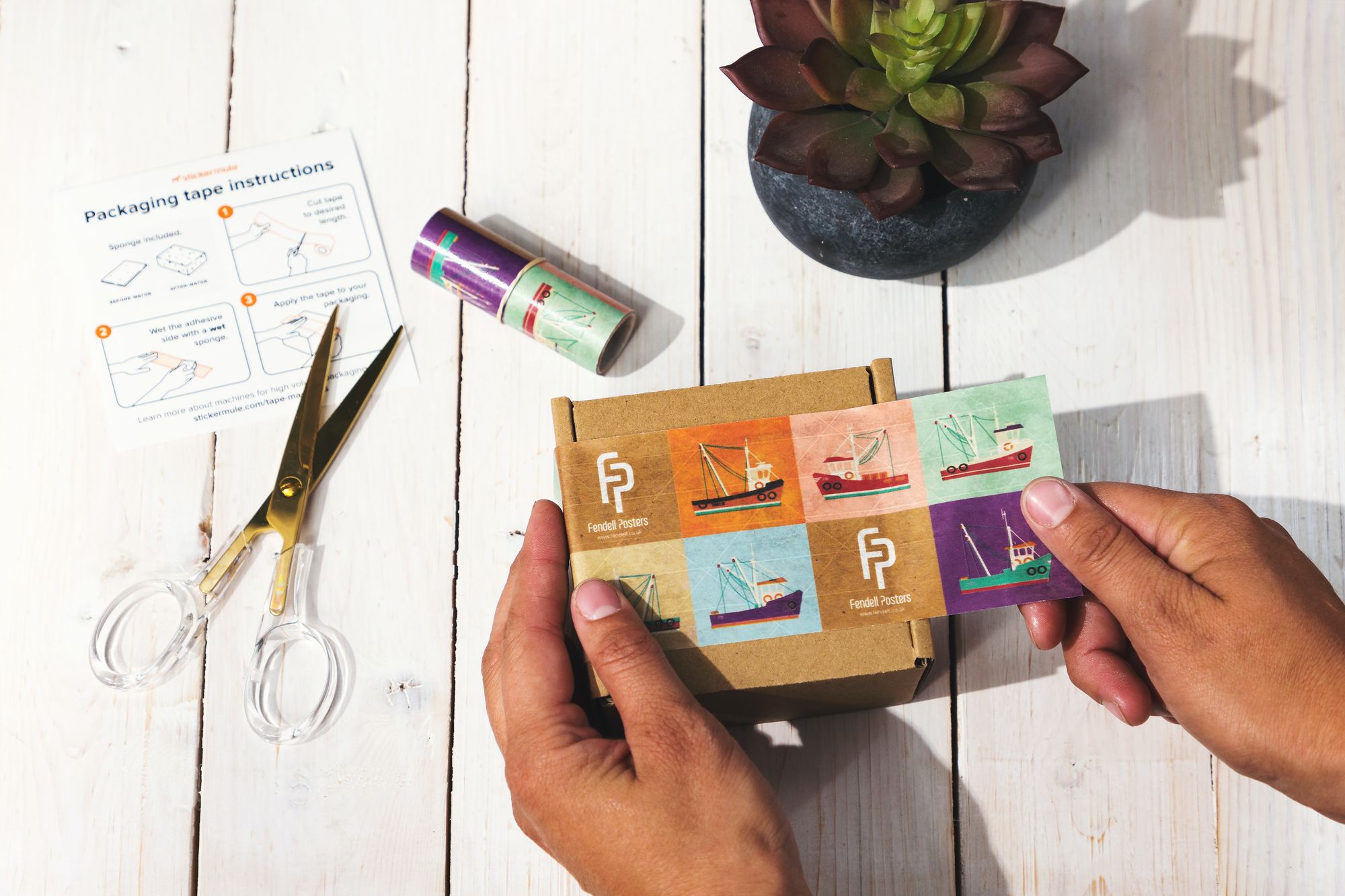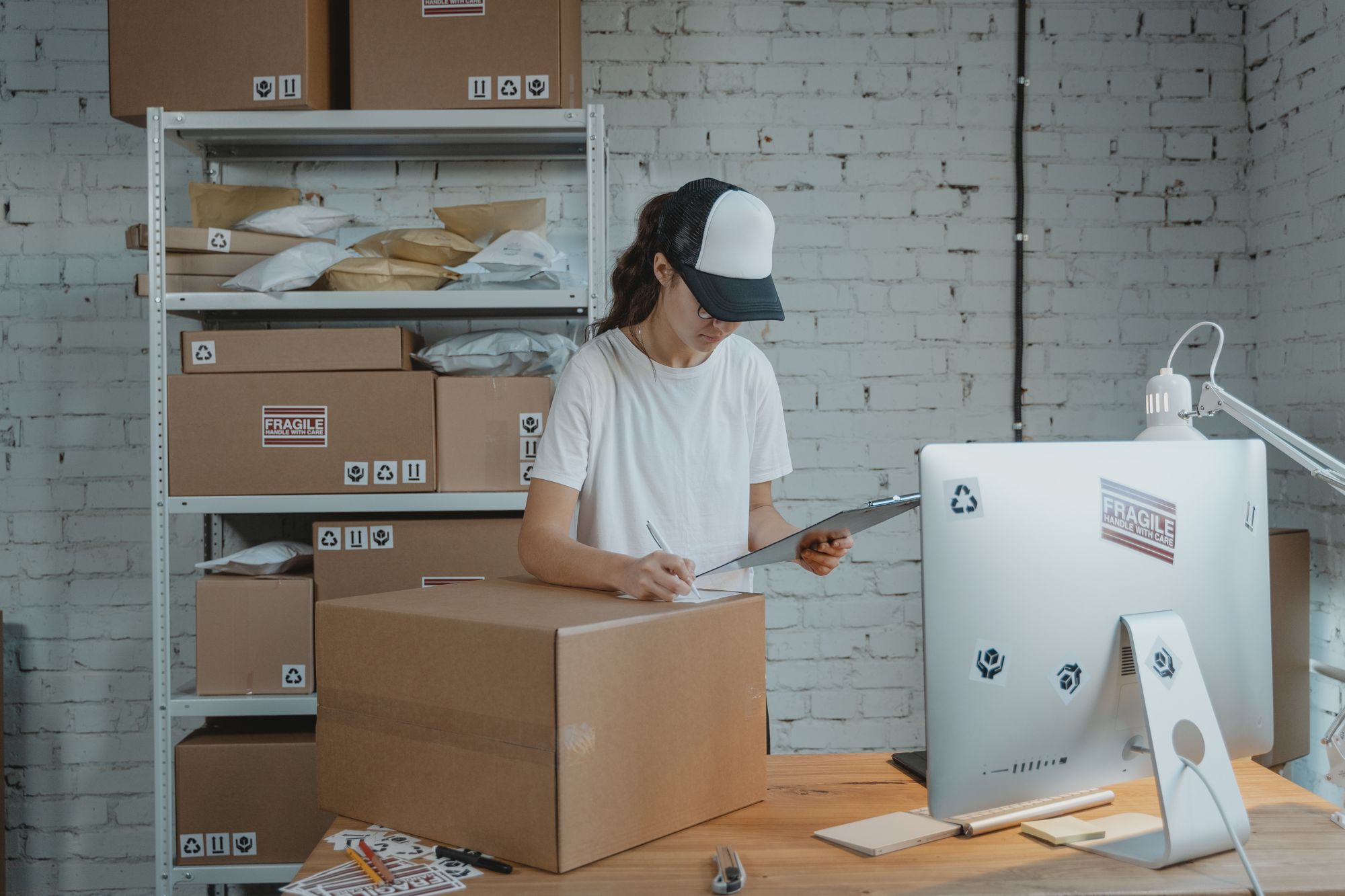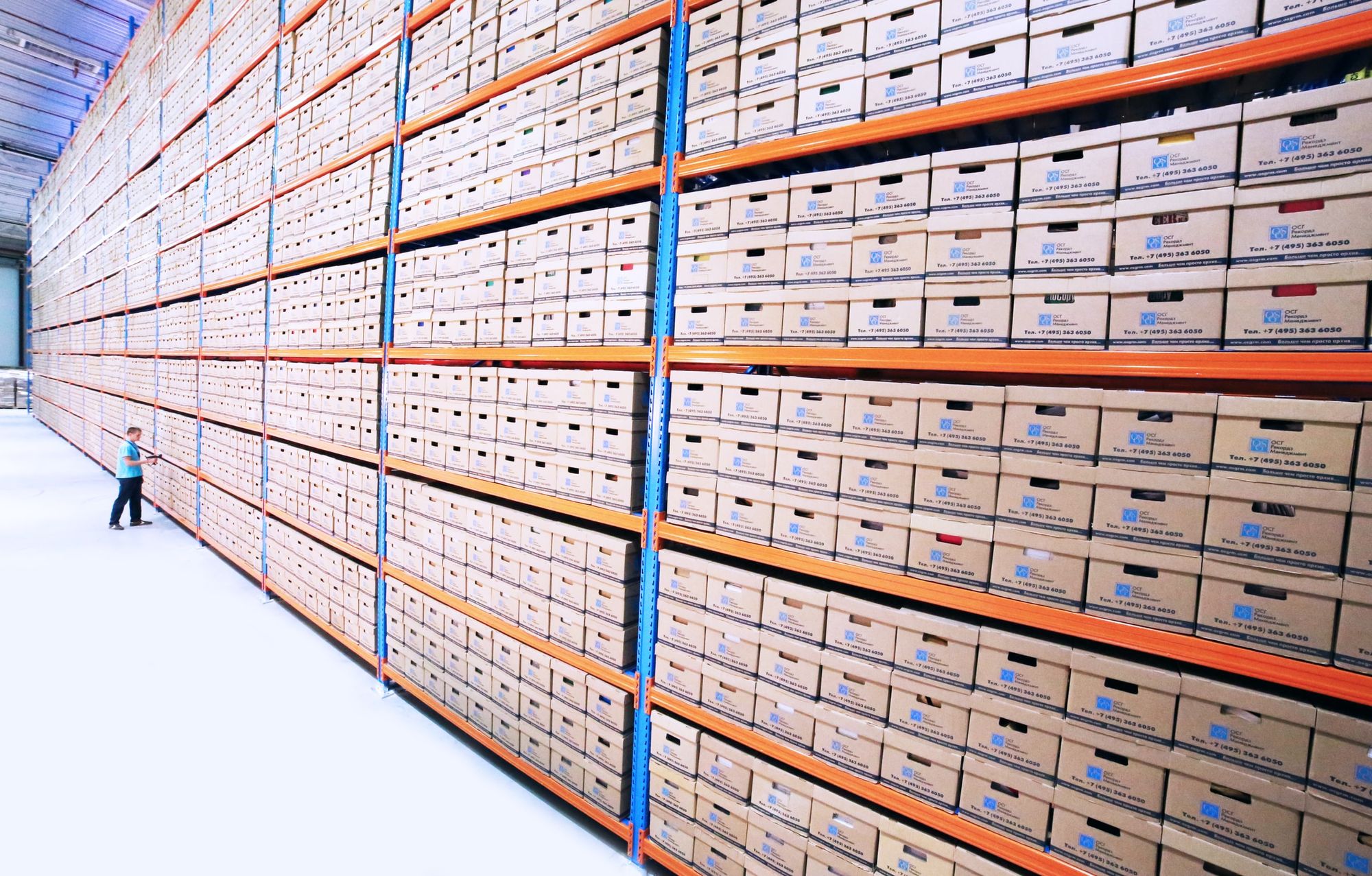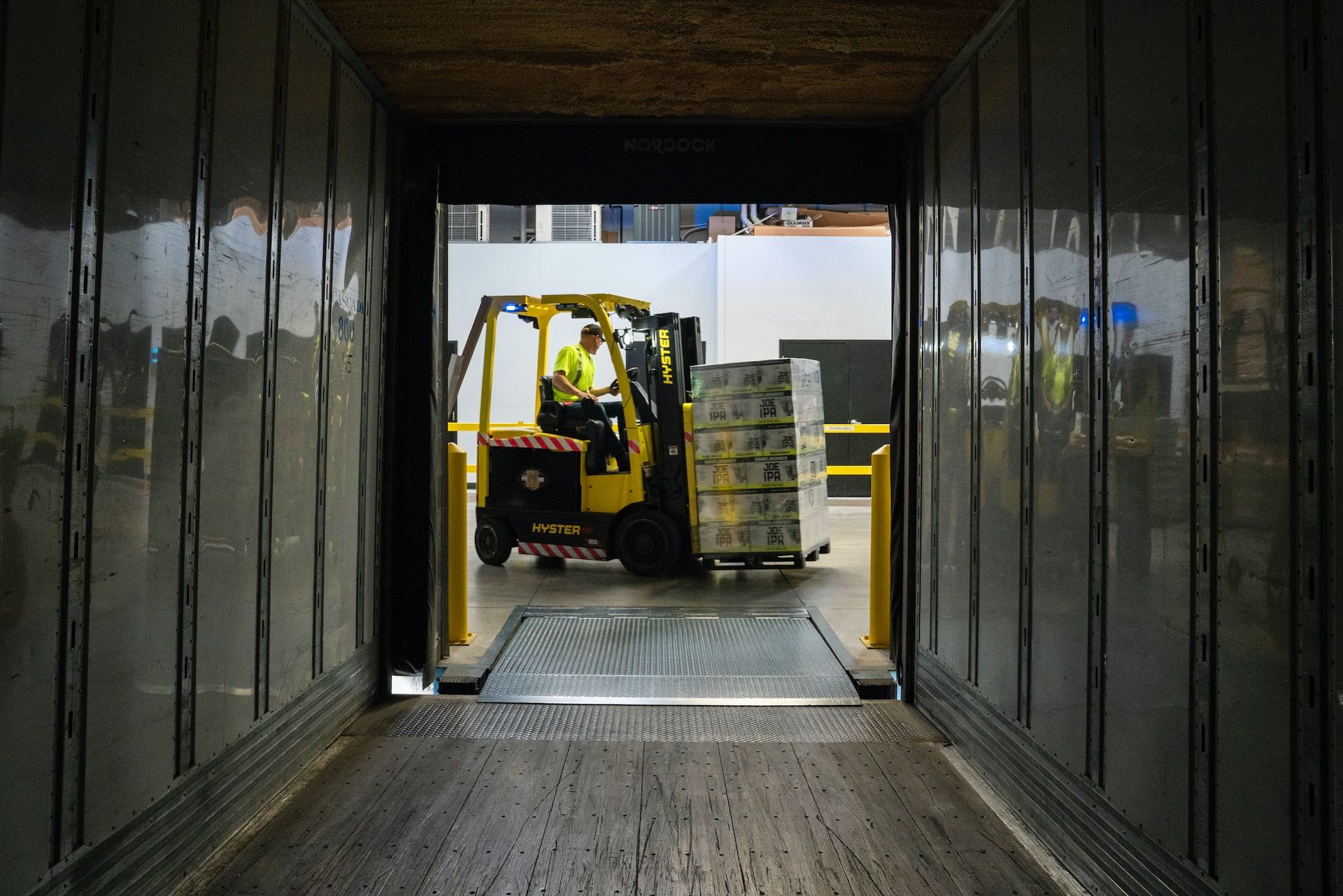Having issues that you aren't selling enough of the items that are related to them? Profited from excessively numerous bulk shipping discounts and have a large inventory of goods?
Before attempting to increase sales, consider kitting as an alternative to consignment inventory.
The practice of kitting can be very beneficial to your business, regardless of whether you're a manufacturer, retailer, or wholesaler.
It not only saves your company a ton of time and money, but it could also increase sales and employee productivity at the same time.
In today’s article, we’ll learn about kitting and related concepts. Let’s take a look at the table of content:
- What is Kitting?
- Importance of Kitting
- Why is Kitting Used?
- What Help Can a 3PL Give on Kitting?
- Process of Kitting
- What are the Advantages of Kitting?
- How You Can Manage Kitting?
- Some Examples of Kitting
- Reasons Why Kitting Requires Accuracy
- Tips for Effectively Managing Kitting
- Why Do You Need to Implement Inventory Kitting Software?
- Frequently Asked Questions (FAQs) Associated with Kitting
- Conclusion
- How Deskera Can Assist You?
Let’s Start!
What is Kitting?
Kitting is the process of combining various products or goods into a single SKU (Stock keeping unit). It is frequently referred to as a kit or bundle and is packaged and shipped together as a single unit.
You can save time by pre-assembling numerous items into bundles and carrying them all at once rather than picking and packing each item individually.
When filling an order for a single item, the SKU code in the warehouse management system is typically used to locate the product. Further, you can kit products that are ordinarily bought together into a single unit that is kept in your fulfillment center.
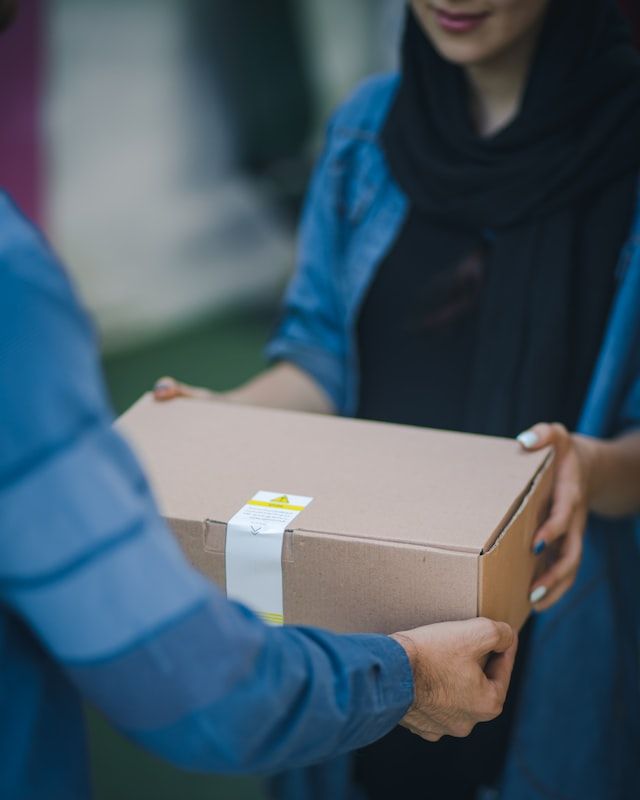
The advantage of this is that you can quickly and readily identify the things as a bundle after an order has been placed. And, you don't have to worry about placing the various products together.
Kitting helps businesses succeed by increasing sales, client satisfaction, and profits. This is advantageous for both traditional corporate activities like e-commerce, manufacturing and
Importance of Kitting
Kitting's core ideas and benefits apply to all businesses, creating a profitable business strategy. Even though every company or organization is unique, kitting is a crucial part of a business strategic tool.
Kitting increases the value of the products and encourages customer loyalty. Furthermore, the cost of labor can be decreased, storage can be streamlined, and merchandise can be moved more quickly.
The best kitting software can help your business in many areas, from production and sales to accounting and payroll.
Following we have discussed some crucial points explaining the importance of kitting software. Let’s learn:
Real-time Updates
Inventory tracking is possible thanks to the application. The software provides real-time updates for accounting.
Reduces Costs
Bundling products or parts lowers costs. Save time and money to reduce costs and enable your business to invest in other areas.
Simplifies Labeling and Tracking
Kitting can make labeling and tracking simpler. It is because the software allows for the creation of a single label for multiple items in the package.
Increases Average Order Amounts
Larger orders with a company may be placed by customers at a set discount.
Enable Cross-Sale Categories
The software enables cross-selling between categories. You can introduce a brand-new category to potential clients or customers by combining new products with well-known ones.
Boosts Consumer Satisfaction and Loyalty
Kitting offers the chance to increase subscriptions by encouraging satisfied customers to become repeat buyers.
Eliminating Dead Stocks
Inventory can be reduced by bundling a product that a company has on hand but has not yet sold.
Forecasting your Sales
The software might enable you to predict your sales. Find out which products sell the fastest and which ones sell more slowly.
If you want to focus on particular products, like bags, t-shirts, and so on, your company may provide a discount for a set amount of purchases.
Moreover, these savings can be accounted for in your inventory management software.
For example, if you buy two t-shirts, the third is half off; if you buy a shirt, an accessory, such a bag, is discounted. The software system processes several items as one order in a shorter amount of time.
Manufacturers are able to offer their customers more products for less money. A kitting software management system can track employee productivity in addition to stock levels, customer orders, and barcodes.
Why is Kitting Used?
Kitting processes help companies optimize their order fulfillment processes by cutting lead times, costs, and mistakes. Furthermore, these improvements result in a fulfillment process that is more effective. It raises customer satisfaction, loyalty, and business revenue.
Kits (individual kitted items) are typically built throughout the fulfillment & warehouse stage of the supply chain management. But building kits is also a part of the manufacturing process. The more upstream in the supply chain the kits are produced, the more money the product manufacturer may save.
Now that you know what kitting is, it's imperative to comprehend its purpose. It's important to understand the purpose and circumstances for which kitting services are useful because not every company will want to use them.
Following we have discussed a few common reasons why businesses choose to use kitting services. Let’s learn:
Offering More Options to the Consumer
Kitting can also be utilized to provide customers more choices. Giving customers a choice of ready-made solutions might give them influence over their purchase.
For instance, a company like Nintendo, a Japanese multinational video game company offers pre-packaged console sets. It includes one accessory and a game pack-in. By offering a selection of configurations, clients feel empowered to choose the one they want.
From the standpoint of distribution, this can help keep warehouse expenses low because the sets are already packaged together.
Reducing Distribution Costs
In some circumstances, using storage kitting services could lower the cost of delivery. Companies approach this in various ways, but they all begin by reviewing sales data.
This is due to the practice known as "kitting," which entails combining SKUs that are frequently purchased together to create new "kit" SKUs.
For instance, an online vendor of office supplies might see that customers frequently purchase a set of a legal pad, pens, and a padfolio at the same time.
In this situation, the retailer might consider assembling the three parts into a kit that can be sent as a single unit. By removing the picking fees that most warehouses charge for each item that is picked, pre-assembled kits can reduce pick and pack expenses. Businesses can also use distinctive packaging to lighten shipments and reduce shipping expenses.
Offloading Unprofitable Selling Stock
After analyzing sales data, a company can discover that a few connected products are performing better than anticipated while one or two do not.
Moreover, excess inventory may also become a problem at this point. When a corporation has more inventory on hand than it requires, action must be taken. Kitting is one solution to this problem.
Let's take an example of teen's books. Consider a publisher who has 10 children's books on the market, all of which are about the same subject, but only 2 of them are selling well.
The publisher ought to consider combining the two best-selling books with the two that don't sell as many copies to create a "bundle" of books that may be purchased at a reduced cost.
This should lead to a sufficient number of package purchases, which, if well promoted, will alleviate the inventory problem and increase income.
If you're wondering whether kitting is a good answer for your business, get in touch with the Deskera team. Since we have provided kitting services to businesses in numerous industries, we are aware of what works and what doesn't.
What Help Can a 3PL Give on Kitting?
You might be uncertain about the best way to go about kitting. Working with a 3PL company is one of the best options among the many to consider in this circumstance.
To understand how a 3PL can be useful, you must first be aware of what this is. Let’s learn about it.
3PL: The term stands for third party logistics. You can contract with this company to handle certain aspects of your logistics, such as:
- Warehouse management
- Fulfillment services
- Distribution
- Supply chain management
As you may expect, if you outsource to a 3PL warehouse company, kitting will be handled for you.
They will make sure you receive the results you need for a high level of success in the marketplace as well as a prompt response. Moreover, inaccurate kitting and slow distribution times won't be a problem in the end.
As a result, you can guarantee that you will achieve a high level of customer satisfaction by offering the caliber of service that customers both expect and deserve.
It's crucial to bear in mind when selecting a 3PL service that they will provide everything required to ensure the success of the service.
They will, for instance, make sure that processes can be automated whenever possible utilizing the most modern techniques and technologies. Furthermore, they will also employ the required people.
We want to guarantee that working with us is completely stress-free for you and that this is one aspect of your business that you won't need to worry about.
As an alternative, everything will be handled skillfully and in your favor. Another advantage of hiring a 3PL is that having less inventory space will allow you to pay less for the space required to store your items.
Process of Kitting
Kitting is a simple process: Any number of products can be assembled quickly, given a single SKU in your system, and packaged for sale. There are only a few steps needed.
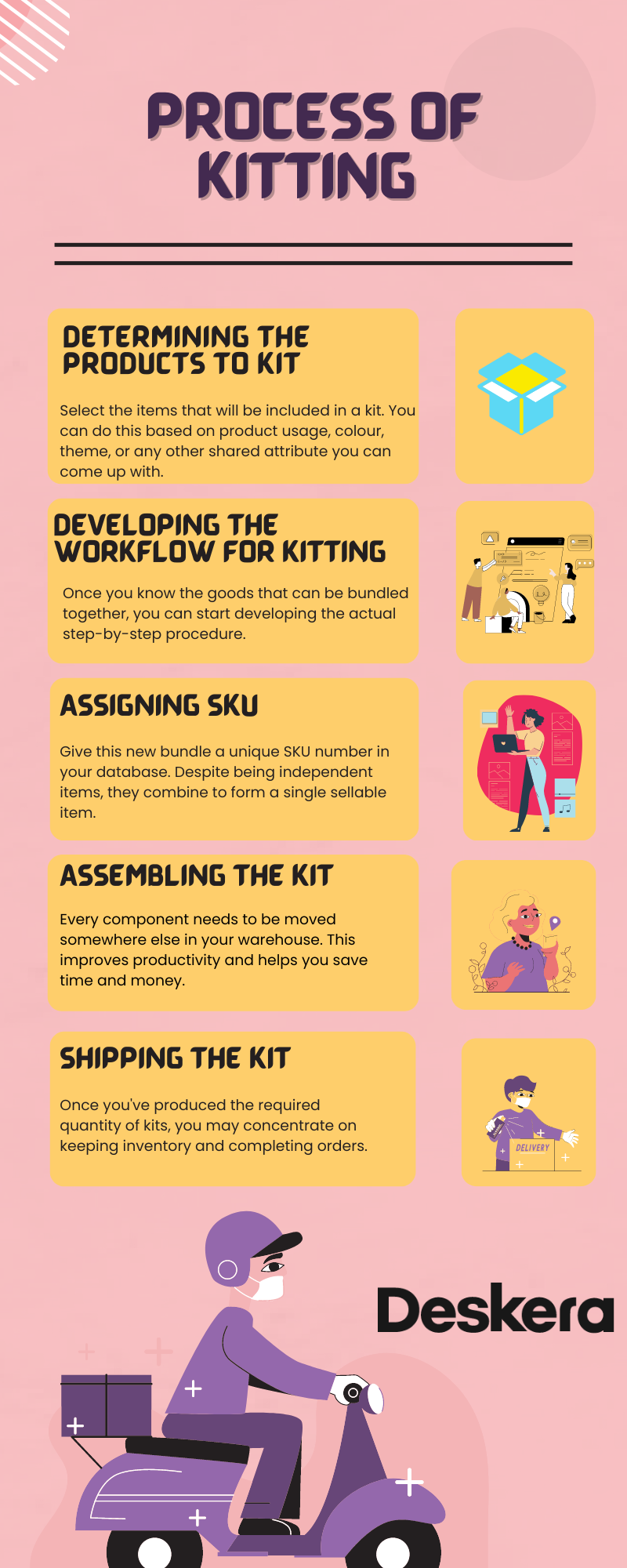
1. Determining the Products to Kit:
Select the items that will be included in a kit. You can do this based on product usage, color, theme, or any other shared attribute you can come up with.
Moreover, you might also look into wholesale products that you can package into kits if you want to boost your income.
2. Developing the Workflow for Kitting:
Once you are aware of the goods that can be bundled together, you can start developing the actual step-by-step procedure.
Throughout this phase, you should be as specific as you can with each step's description. Be aware that depending on the kit, the procedure may alter. For each kitted SKU, you might need to develop a unique method.
3. Assigning SKU:
Give this new bundle a unique SKU number in your database. Despite being independent items, they combine to form a single sellable item. Your inventory system should keep track of this so that you can precisely count your goods and learn more about sales trends.
4. Assembling the Kit:
To make it simple for your team to bundle the kit, every component needs to be moved somewhere else in your warehouse. This improves productivity and helps you save time and money.
5. Shipping the Kit:
Once you've produced the required quantity of kits, you may concentrate on keeping inventory and completing orders.
In your online store's or order entry system's systems, the special kit SKUs must be set up. Otherwise, your fulfillment process won't know how to use that kitted SKU.
Further, these packages can now easily be advertised and sold. Watch your revenue and earnings increase.
What are the Advantages of Kitting?
Following we have discussed several advantages of kitting. Let’s discuss them:
Reduced Labor Costs
Fulfilling orders takes less time from employees than if each item had to be chosen individually. As productivity rises, labor expenses per order fall.
Cheaper transportation to and from warehouses results from improved efficiency. You don't need as many employees because it takes less time to fill each order, which decreases the chance of overtime.
Organization & Efficiency
When several SKUs are merged into one, the overall amount of inventory on hand decreases. Even though there are fewer things overall, there are still more products than there are things.
For instance, if you bundle three similar light bulbs into a single 3-bulb SKU, the number of light bulbs you carry stays the same. Instead, all it did was change the number of things that needed to be controlled.
This might help you become more organized and productive, depending on your existing storage practices. When it comes to selection, this is especially true.
If there are fewer overall items to track, more employees can be assigned to zones. These employees' productivity in their specific areas can rise as their understanding of product locations expands.
Reduced Errors
There is less chance of the kinds of mistakes that can happen when picking and packing the things individually. It is because all the components in the kit are predetermined and frequently preassembled.
More accurate order fulfillment can increase customer satisfaction while also saving the organization money since it processes fewer returns.
Increased SKUs and AOV
This is advantageous for e-commerce in particular because it gives retailers access to extra SKUs. To move more total units, these SKUs may combine a variety of products.
In other words, when there are more SKUs available, buyers are more inclined to make larger purchases.
It is possible to provide a discount for kitted items. By doing this, you might increase sales volume while generating more income and paying less for delivery overall.
Warehouse managers have a better chance of initially obtaining orders thanks to the advance kitting. As a result, the average order value rises.
Reduced Packaging Costs
The cost of the packing supplies is reduced by kitting. Products are typically packaged into uniformly sized containers individually.
When it comes to packaging and shipping, they either combine into a bigger container or ship in their own bigger container. This requires more packing materials compared to when a larger number of kits are integrated into their own SKU.
Due to kitting, the package's dimensions are smaller. The cost of packaging tape and filler materials is also reduced. These fees can increase as demand for your orders increases.
It's also true that shipping a fitted package can be less risky than shipping a standard pick, pack, and ship package. This holds true if the kit packaging was created especially for the items in the bundle.
Faster Fulfillment Lead Times
Order fulfillment is nearly usually quicker than typical pick & pack items because the items are pre-bundled.
The explanation is straightforward: to send the same amount of things, much less picking and packing is needed. There is no need for this to occur again because it has already occurred earlier in the supply chain.
Kitting also enables more automated operations, which is something else to consider. If you are certain that certain products will always ship together, you can build an automatic processing system around them. Additionally, you can pre-print labels and perform other tasks because every box that leaves is the same.
Higher Sales Revenue
Companies that use kitting can boost the average order value and boost overall product sales. At the same time, buyers receive better value because buying the kit typically saves them money compared to purchasing the elements separately.
Reduced Storage Costs
The cost of services like distribution and warehousing is determined by the amount of storage space your product needs. By combining goods in kits, it may be possible to reduce the overall amount of storage required to hold these products.
This is especially true if the SKUs have large cavities or open spaces that have a lot of "air space." Other goods can ship inside the larger cavities of the associated SKUs to reduce overall storage use.
But the opposite is also true. As you put these kits together, it's probable that the quantity of storage space required to hold them will increase. The many types of bundled products have a big impact.
Increased Product Sales
Product kitting is a practical marketing tactic for less well-liked products. It will help you sell products that could otherwise go out of stock, reduce your inventory, and increase your inventory turnover ratio. Due to the value that product kitting gives; customers are motivated to make greater purchases.
Reduced Pick Pack and Ship Costs
The kitting process is carried out by assembly lines and repeatable procedures when items are bundled together all at once. By doing this, the cost of creating these bundles is lower than if it were done during the order fulfillment stage.
Faster Shipping Service
Businesses can handle orders quickly since workers don't have to spend much time finding, choosing, and packaging the individual parts of the kit.
The picking, packing, and sending of many products takes time. Since each step is finished more quickly and with fewer errors when these products are kitted, customers can get their orders sooner. As a result, you get satisfied customers who are more likely to buy from you again.
How You Can Manage Kitting?
There are three approaches to manage kitting in your warehouse. You must take into account the three criteria we will now cover as well as the logistics of the process in order to achieve this.
Start by attending to the inside kitting. If you wish to handle the kitting in-house, a decent inventory management software is the essential consideration that you will need to make.
Make sure your kitting software can handle the following things:
- Create purchase orders when necessary and low stock alerts
- Update online retailers on stock availability
- Monitor the supply of your SKUs.
- To speed up order picking, include the inventory location on packing slips.
You can also use a fulfillment center as your second option. A 3PL company can stock and ship your online goods. Your stock can be taken, your kits can be made, everything can be stored, and then it can all be sent.
Another choice is to work with suppliers and companies that make goods. You can ask the manufacturer about kitting them if you are ordering a sizable number of the items. A lot of people will charge extra to offer this service.
Some Examples of Kitting
A few types of kitting include gift boxes, subscription boxes, and personalized goods.
For instance, using subscription boxes is a kitting benefit that is growing in popularity. Customers in this example submit repeated orders for product combinations that deliver according to a timetable.
These products are prepared in the order fulfillment warehouse in advance based on the total (or anticipated) number of subscription box orders.
Assembled Products
Kitting is frequently used in manufacturing and wholesale operations to track inventories and part reorders. Building to order or manufacturing to order is one type of kitting process.
You can offer your customers more options and better service because of it.
For instance, you might stock various parts and assemble the pieces when customers buy furniture that is individually created for them. You can create a variety of things by combining various components, giving your customer more choices.
Example: The notorious flat-pack furniture options from IKEA.
Packaged-ready-to-Order Sets
Customers can choose from set numbers, set colors, or a mix of packed and ready-to-order sets.
By enabling clients to select the items they like without needing to combine them, the ordering process can be streamlined, and the sales cycle shortened. Additionally, businesses can provide fixed discounts to boost sales.
Example: Lip kits created by Kylie Jenner laid the groundwork for a vast cosmetics empire.
Subscription Boxes
The subscription economy is currently growing significantly, especially for food products including sports drinks, vitamins, coffee, and beauty products.
Subscription boxes are a great method to sell a single bundle containing multiple products. Since they don't have to bother about organizing subsequent orders and receive their goods immediately, subscription boxes are advantageous for both consumers and businesses.
Example: A high-end monthly beauty package called Glossy Box gives users five deluxe-sized items each month.
Personalized or Custom Items
From an inventory perspective, customized or tailored items can be viewed as assembled products, similar to the bespoke furniture example described above.
If you are making unique and customized furniture, kitting will help you keep track of all the materials utilized to make the end piece.
Kitting would be used, for example, if you sold a custom chair along with the custom material used to engrave the chair while both the chair and the custom material were individual stock items in your inventory platform.
Example: FabFitFun is renowned for offering its customers a mix of curated and personalized product offers with each box.
Reasons Why Kitting Requires Accuracy
It makes sense that the main objective of kitting would be to offer the quickest practical answer. Without a doubt, this is one of the goals.
It's important to realize that it's not the only one. Setting a high standard for accuracy is essential. It is easy to see why precision is an important factor.
The main determinant of a manufacturing distributor's success isn't always the ability to save money. Instead, it depends on how content customers are and whether they choose to stick with a particular brand. Naturally, preserving customer satisfaction necessitates exerting every effort to guarantee order accuracy.
As a result, businesses must now provide distribution more rapidly without compromising accuracy levels. This will be a crucial element when looking at overhead costs. Items that were improperly kitted might lead to costly returns and decreased client loyalty. This increases the cost and lengthens the fulfillment procedure.
Additionally, a variety of issues are also made clear by inaccurate degrees of precision. This relates to issues with:
- Kits that are incomplete
- Overstock and inaccurate inventory reporting
- Inadequate parts or components
A buyer may occasionally receive only half of a kit. They request a new order as a result, as well as potentially a discount or a full refund. Increased lead times, a need for more manpower, and machine downtime will be the end results of this.
These are just a few of the factors that must be taken into account when emphasizing accuracy through kitting.
Tips for Effectively Managing Kitting
Kitting, of course, has a plethora of benefits for a company that sells goods. But how can you be sure the process is carried out correctly?
After all, the management system or systems of the managers who employ a technique determine its performance fully.
Following we have discussed some important tips for effectively managing kitting. Let’s learn them:
Run a Test Project First
It would be in your best interests to ease into kitting as opposed to diving right in. If you have identified potential SKU combinations that might interest your customers, start a trial run.
You can thoroughly review your kitting process during this trial run before scaling it up. This enables you to identify potential holes or flaws in your process before they become significant problems.
Putting in a WMS System
Software is necessary to properly track inventory changes. Given the magnitude at which kitting projects are often undertaken, this is especially true.
To see whether you don't already have a digital inventory system, you must conduct some research before beginning a significant kitting project. If not, your project won't be accurate enough, and you run the danger of making other people dissatisfied.
Always Keep an Eye on the Standard
One of the biggest faults you can make in any endeavor is failing to track the results. You must develop a system that delivers all the relevant information regarding order accuracy before starting a kitting job.
Without this information, it is almost impossible to identify process issues. Make sure your quality tracking system is configured before you start.
Building up Warehouse Management
Your warehouse supervisors should be promoted for the best kitting process. These supervisors should be crucial to organizing and carrying out the procedure.
After finishing this, they will be much better able to appreciate and understand the kitting process. As a result, they are able to control that process more effectively.
Use Kitting Services throughout the Entire Process
We have complete control over the supply chain thanks to AMS. As briefly mentioned above, this enables us to link various points together and reduce your costs earlier in the chain.
For instance, kitting services could be offered during the manufacturing stage as opposed to a warehouse kitting process.
Why Do You Need to Implement Inventory Kitting Software?
Kitting, a type of inventory management software, can track individual components and create new SKUs for kits prior to delivery. On the market, there are many options for automating and keeping an eye on your kitting processes.
Businesses may reduce the need for warehouse space, speed up inventory processes, and efficiently and correctly complete orders by using inventory management software.
Inventory management technologies enable businesses to construct kits, determine kit prices, and automatically update inventory for the kits' component parts.
Top inventory management software also aids organizations in lowering inventory costs while preserving customer satisfaction by tracking inventory in real time across numerous locations, automatically detecting reorder points, and managing safety supplies.
By investing in software, you can keep track of components and kits and determine the best course of action to increase sales and lower costs. You might be able to better organize your warehouse activities and have access to product information with the aid of inventory kitting software.
You might be able to upgrade the technology you now employ because it is often offered as an add-on to pre-existing inventory software. You can find it simpler to meet your desired inventory KPI due to the large cost savings.
To boost your profits, make sure you know the difference between markup and margin.
Frequently Asked Questions (FAQs) Associated with Kitting
Following we have discussed some crucial frequently asked questions (FAQs) regarding kitting. Let’s learn:
Que 1: How Can I Choose the Items to Put in my Kit?
Ans: Consult with other company stakeholders carefully while choosing your kitting strategy. You should look at your overall frequency of selling several items in the same sequence. This gives you the best idea of what things might make ideal kits.
Furthermore, you can establish that combining specific products will enable a marketing or sales push. By working together, your product, sales, and marketing teams can create a forecast in addition to the bundle promotion.
Once this strategy is established, collaborate with your manufacturing partner to produce the kits before moving on to the fulfillment phase.
Que 2: What is Light Manufacturing?
Ans: Another aspect of this sector is light manufacturing, often known as kitting and assembly fulfillment or manufacture as a service.
We are aware that on occasion you might need to construct part of your packaging or boxes before delivering them to the customer or that you might need to significantly adjust your product before shipping.
You can skip the costly and time-consuming process of assembly or modification by using our light manufacturing services. Even if sending us an empty box to pack your things in makes little sense.
We are also aware that things don't always go as planned in this business. If a problem arises with your product during production or delivery, we can help.
Que 3: What is a Kitting Lead?
Ans: A kitting lead is in charge of the pickers, packers, and shippers who are in charge of kitting in a warehouse. They are in charge of organizing, carrying out, and getting ready to ship each kit during ordinary warehouse operations.
In warehouses, kitting leads usually have a plethora of knowledge and experience. A skilled kitting lead has the ability to work with existing material operations while also improving them in vital areas like ABC analysis and SKU optimization.
Que 4: What Fees are Incurred for Kits?
Ans: A kitting fee is the cost of assembling a kit prior to delivery. Since they require more time and labor to build than a single product, kits are more expensive.
Kitting often costs between $30 and $50 per hour. More expensive and temperature-sensitive goods are frequently associated with higher prices.
Que 5: Difference between Kitting and Bundling
Ans: The terms "kitting" and "bundling" are sometimes used interchangeably. Kitting and bundling are two terms that are occasionally used incorrectly to mean the same thing.
Assembling several goods for delivery and sale is a requirement for both bundling and kitting.
While kitting specifically refers to a combination of complementary things that can be sold as a new product, bundling is a broader term that is used to describe any grouping of products.
Kitting is the practice of providing all the ingredients needed to create specific meals in subscription boxes. Maintenance contractors use kitting to boost the effectiveness of their own operations when they provide their technicians with preassembled kits that include all the pieces they require for a certain work.
Bundling is widely used for one-time promotional offers or unique seasonal campaign activities. An online store might, for instance, provide flat-rate shipping to customers who buy up to three of a single item.
What features do they share? Both product bundling and kitting combine several different SKUs to produce a single new SKU.
Que 6: Difference between Kitting and Assembly
Ans: Individual components are typically packaged for transportation when moving furniture, entertainment systems, and other items that must be assembled after shipping.
Numerous third-party shipping companies offer this service. For delivery to the location, they purchase individual components from the manufacturers and put them together into kits. These kits are stored separately from the individual components prior to shipping.
Que 7: Kitting Meaning in Logistics
Ans: Kitting is the process of combining multiple products into a single "kit" that is delivered to the client.
Businesses and logistics providers can expedite order fulfillment, lower shipping costs, and simplify shipment operations by implementing kitting. This also makes shipping tracking easier and improves customer satisfaction.
For instance, you may have seen logistics kitting in action if you've ever ordered a large number of things from numerous merchants on Amazon. Before delivery, the shipping team gathers every item and assembles it into the fewest number of packages possible.
Under the usual paradigm, each product would be transported separately, which would increase the expenses for both the consumer and the logistics provider.
Que 8: Kitting Meaning in Warehouse
Ans: Kitting in a warehouse is the process of locating multiple SKUs, combining them into a single package, and creating a new SKU for that package prior to shipping.
Employees of the warehouse choose a number of products, which they then transport to an assembly room where they are bundled and sent.
Que 9: Kitting Services Meaning
Ans: Kitting services refer to kitting done by outside fulfillment companies (3PL). Many businesses use 3PL companies (see 3PL definition) to use kitting in order to reduce fulfillment costs and ensure that customers receive the fewest number of packages possible. It is also used in manufacturing when a third party puts the finished product together for the customer.
Utilizing kitting services keeps costs down and frees the store to concentrate on selling products because in-house assembly is occasionally too expensive for smaller businesses.
Que 10: Kitting Operations Meaning
Ans: Kitting operations refer to the full spectrum of tasks necessary for the product kitting process. This entails receiving the order(s), choosing the items, assembling the kit, packaging the kit, and shipping.
Kitting operations require a streamlined warehouse layout and specialized training. This ensures that your fulfillment process is optimized and that you save money.
Conclusion
A simple yet effective order fulfillment technique called kitting can save your business time and money while also streamlining and organizing your order fulfillment procedures.
Kitting can increase a company's profitability and operational efficiency. On the other side, kitting, which offers customers a convenient selection of comparable items at a reasonable price, can boost customer satisfaction.
Furthermore, it's something that you should continually assess. Your company's inventory list might grow along with it, and client tastes almost certainly change over time and seasonally.
To fully benefit from kitting done correctly, it is best to regularly audit your inventory for efficiency opportunities, such as kitting possibilities.
How Deskera Can Assist You?
Deskera MRP allows you to closely monitor the manufacturing process. From the bill of materials to the production planning features, the solution helps you stay on top of your game and keep your company's competitive edge.

Deskera ERP and MRP system can help you:
- Manage production plans
- Maintain Bill of Materials
- Generate detailed reports
- Create a custom dashboard
Deskera ERP is a comprehensive system that allows you to maintain inventory, manage suppliers, and track supply chain activity in real time, as well as streamline a variety of other corporate operations.
Deskera Books enables you to manage your accounts and finances more effectively. Maintain sound accounting practices by automating accounting operations such as billing, invoicing, and payment processing.
Deskera CRM is a strong solution that manages your sales and assists you in closing agreements quickly. It not only allows you to do critical duties such as lead generation via email, but it also provides you with a comprehensive view of your sales funnel.
Deskera People is a simple tool for taking control of your human resource management functions. The technology not only speeds up payroll processing but also allows you to manage all other activities such as overtime, benefits, bonuses, training programs, and much more.
This is your chance to grow your business, increase earnings, and improve the efficiency of the entire production process.
Key Takeaways
We've arrived at the last section of this guide. Let's have a look at some of the most important points to remember:
- Kitting is the process of combining various products or goods into a single SKU (Stock keeping unit). It is frequently referred to as a kit or bundle and is packaged and shipped together as a single unit.
- Kitting increases the value of the products and encourages customer loyalty. Furthermore, the cost of labor can be decreased, storage can be streamlined, and merchandise can be moved more quickly.
- Kits (individual kitted items) are typically built throughout the fulfillment & warehouse stage of the supply chain management. But building kits is also a part of the manufacturing process.
- Order fulfillment is nearly usually quicker than typical pick & pack items because the items are pre-bundled. The explanation is straightforward: to send the same number of things, much less picking and packing is needed.
- Product kitting is a practical marketing tactic for less well-liked products. It will help you sell products that could otherwise go out of stock, reduce your inventory, and increase your inventory turnover ratio.
- You can thoroughly review your kitting process during this trial run before scaling it up. This enables you to identify potential holes or flaws in your process before they become significant problems.
- Top inventory management software also aids organizations in lowering inventory costs while preserving customer satisfaction by tracking inventory in real time across numerous locations, automatically detecting reorder points, and managing safety supplies.
Related Articles
